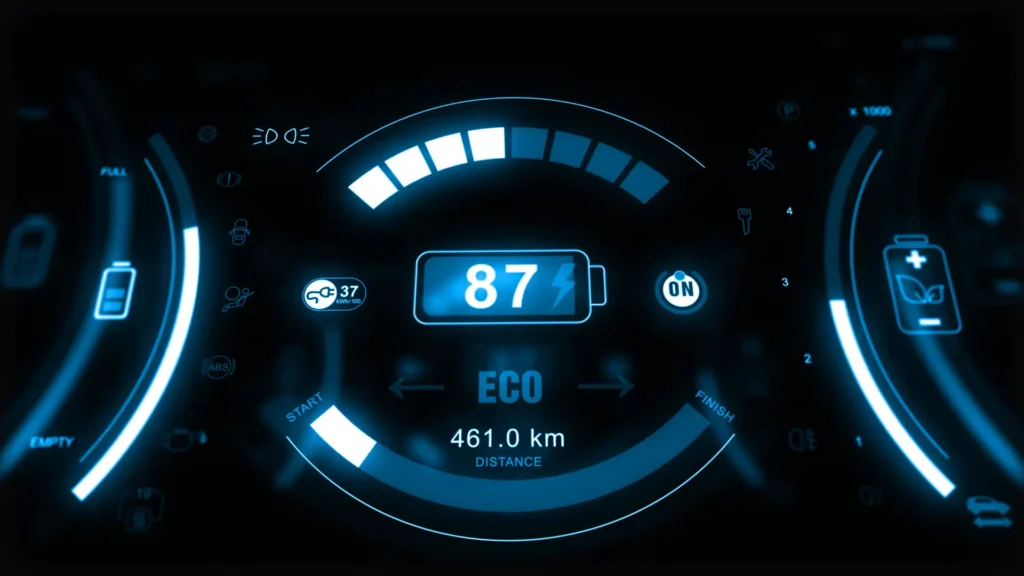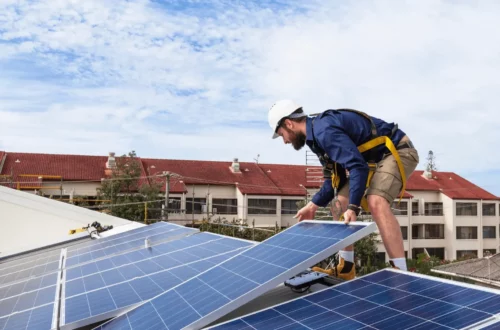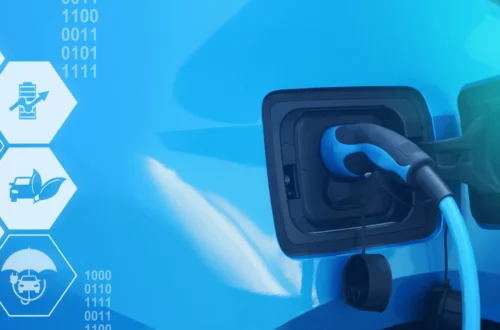Factors That Influence Total Driving Range of Electric Vehicles

Have you ever wondered what factors can influence the total driving range of electric vehicles? From temperature and terrain to driving style and battery age, there are several key elements that play a crucial role in determining how far an electric car can go on a single charge. Understanding these factors is essential for optimizing your driving experience and maximizing the performance and efficiency of your electric vehicle.
we will take a deep dive into the world of electric vehicles and explore the various factors that influence total driving range. We will discuss the effects of different driving conditions, such as cold weather and high-speed driving, on electric car performance. We will also examine the importance of factors like battery size, regenerative braking, and aerodynamic design in maximizing electric vehicle range.
Read on as we uncover the most talked-about factors that affect the range of an electric vehicle and provide insights into how you can optimize your driving habits, maintain your vehicle’s battery health, and make the most of available charging infrastructure.
Factors Influencing Electric Vehicle Range
When it comes to electric vehicles (EVs), understanding the factors that influence driving range is crucial for optimizing your driving experience. Several key factors can affect the total driving range of electric vehicles, ranging from external conditions to internal components. Let’s explore these factors in detail:
Speed
Driving at higher speeds can significantly reduce the range of an electric vehicle. As the speed increases, the aerodynamic drag on the vehicle also increases, requiring more energy to overcome it. So, maintaining a moderate speed can help maximize the driving range of an electric car.
Wind
Strong headwinds or crosswinds can have a noticeable impact on the range of an electric vehicle. When driving against strong winds, the car has to work harder to maintain the desired speed, resulting in increased energy consumption and reduced range. It’s advisable to take wind conditions into account during long trips.
Payloads
Carrying heavy payloads, such as luggage or additional passengers, can lower the driving range of an electric vehicle. The extra weight increases energy consumption and puts more strain on the battery. To optimize range, try to minimize unnecessary cargo or distribute the load evenly within the vehicle.
Tire Fastening
Proper tire fastening is essential for minimizing energy loss and maximizing range. Inadequate tire inflation or misalignment can cause increased rolling resistance, leading to more energy consumption and reduced range. Regularly check tire pressure and alignment to ensure optimal performance.
Cold Climate
Extreme cold weather can have a negative impact on the range of an electric vehicle. The battery’s performance decreases in low temperatures, limiting its ability to deliver the same amount of energy efficiently. Preconditioning the vehicle while connected to a charger and parking in a garage can help mitigate the range loss caused by cold weather.
HVAC Usage
Using the heating, ventilation, and air conditioning (HVAC) system can affect the range of an electric car. Both heating and cooling require energy from the battery, which can reduce the driving range. To optimize range, try adjusting the temperature settings or using the HVAC system sparingly when necessary.
Battery Degradation
Over time, the capacity of an electric vehicle’s battery gradually decreases due to normal wear and tear. Battery degradation can lead to reduced range and should be taken into account for long-term planning. Regular maintenance and following best practices for charging and discharging can help prolong the battery’s lifespan.
By understanding and considering these factors, you can make informed decisions to maximize the driving range of your electric vehicle. Remember, every little adjustment can make a difference in optimizing the performance and efficiency of your EV.
Also read: Renewable Energy vs Fossil Fuels: Which One is Better?
Other Factors That Affect EV Range
To fully understand the factors that can influence the range of electric vehicles, it is important to consider additional elements beyond the ones previously discussed. These factors can further impact the driving range of electric cars and should not be overlooked in optimizing your electric driving experience.
1. Battery Capacity: The size and capacity of the battery pack in an electric vehicle play a crucial role in determining its range. A larger battery can store more energy and provide a longer driving range. Conversely, a smaller battery may limit the distance an electric car can travel on a single charge, especially for longer trips.
2. Driving Conditions: The conditions in which you drive can impact the range of an electric vehicle. Elements such as traffic congestion, hilly terrain, and frequent stop-and-go driving can increase energy consumption and reduce range. Smooth and steady driving on flat surfaces can help conserve energy and extend the driving range.
3. Temperature: Extreme temperatures, whether extremely hot or cold, can affect the performance and efficiency of electric car batteries. In cold weather, battery capacity may be reduced, resulting in shorter driving ranges. Similarly, high temperatures can cause increased energy consumption due to the need for cooling systems, affecting the overall range.
4. Vehicle Weight and Aerodynamics: The weight and aerodynamic design of an electric vehicle impact its efficiency and range. Heavier vehicles require more energy to accelerate and maintain speed, reducing overall range. Additionally, a streamlined and aerodynamic design can minimize air resistance, improving efficiency and increasing range.
5. Driving Style: The way you drive and your driving habits can affect the range of your electric vehicle. Aggressive acceleration, frequent braking, and high-speed driving can increase energy consumption and reduce the driving range. Maintaining a smooth and steady driving style, along with anticipating traffic conditions, can help optimize range.
6. Battery Age and Condition: Over time, the capacity of electric vehicle batteries may decrease, resulting in reduced range. Regular maintenance, such as battery health checks and calibration, can help maintain battery performance and ensure optimal driving range. Monitoring and preserving the battery’s condition can help prolong its lifespan and maximize range.
7. Charging Station Availability and Speed: The availability and speed of charging stations can significantly impact the range of an electric vehicle, especially on longer trips. Access to fast-charging stations along your route can minimize charging time and provide peace of mind, ensuring that you can continue your journey without range anxiety.
By considering these additional factors, you can gain a comprehensive understanding of the various elements that can influence the range of electric vehicles. Optimizing battery capacity, driving conditions, temperature control, vehicle weight and aerodynamics, adopting a smooth driving style, maintaining battery health, and planning your charging strategy can all contribute to maximizing the driving range of your electric car.
Also read: How Renewable Energy is Transforming the Environment: 5 Major Benefits
Tips and Tricks for Maximizing Electric Vehicle Range
To make the most of your electric vehicle’s driving range, there are several practical tips and tricks you can follow. By implementing these strategies, you can optimize your driving experience and ensure that you get the most out of your electric car. Let’s explore some valuable tips and key takeaways:
1. Plan Your Routes
– Plan your routes in advance to minimize detours and unnecessary mileage.
– Utilize navigation systems or apps that offer EV-specific features, such as locating charging stations.
2. Drive Smarter
– Practice smooth acceleration and deceleration to conserve energy.
– Avoid sudden, aggressive driving maneuvers that can drain the battery quickly.
3. Limit Energy-Draining Features
– Use HVAC systems sparingly, as they can significantly impact the range of your electric car.
– Minimize the use of other energy-consuming features, such as heated seats, high-power audio systems, and excessive exterior lighting.
4. Charge Strategically
– Take advantage of opportunities to charge your electric vehicle whenever possible, such as during work hours or at charging stations along your route.
– Utilize fast-charging stations for quicker recharging times when needed.
Remember, implementing these tips and tricks can significantly enhance the driving range of your electric vehicle. By planning your routes, driving smarter, limiting energy-draining features, and charging strategically, you can maximize the efficiency and performance of your electric car, ultimately providing a more satisfactory driving experience.
Always stay mindful of these strategies to make the most of your electric vehicle’s range and enjoy the benefits of eco-friendly transportation.
Also read: The Complete Guide to Powering Your Home with Renewable Energy
The Future of Electric Vehicles and Range
As technology continues to advance, the future of electric vehicles (EVs) holds exciting possibilities for improved driving range and enhanced performance. Several key advancements are set to shape the EV landscape and address the concerns surrounding range anxiety. Let’s explore these developments:
Battery Technology Advancements
One of the most significant factors affecting the range of electric vehicles is the capacity and efficiency of their batteries. In recent years, there have been remarkable advancements in battery technology, leading to increased energy density and longer-lasting charge. These advancements allow for larger battery packs, resulting in extended driving ranges for EVs. Moreover, ongoing research and innovation in battery chemistry and materials hold the promise of even more significant breakthroughs in the future.
Charging Infrastructure
The expansion and improvement of charging infrastructure play a crucial role in enhancing the range of electric vehicles. As charging stations become more abundant and accessible, the range anxiety associated with EVs is significantly reduced. Fast-charging technologies, such as DC fast charging, enable EV owners to replenish their batteries quickly during long journeys. Furthermore, the deployment of high-power charging stations and the integration of smart grid systems facilitate more efficient charging and better overall range management.
Aerodynamic Design
Aerodynamics also play a vital role in maximizing electric vehicle range. Automakers are increasingly focusing on optimizing the exterior design of EVs to minimize drag and improve airflow. Sleek and aerodynamically efficient body shapes, along with innovative features like active grille shutters, result in reduced air resistance and increased driving range. By streamlining the vehicle’s profile, future EVs will be able to travel longer distances on a single charge.
Regenerative Braking
Regenerative braking technology allows EVs to recover and store energy that would otherwise be lost during braking. This energy is then used to recharge the vehicle’s battery, thereby improving its overall range. Future advancements in regenerative braking systems aim to optimize energy recapture, further increasing the efficiency of EVs. The integration of smart braking algorithms and advanced motor control systems will maximize the amount of energy that can be harnessed from each braking event, ultimately enhancing the range of electric vehicles.
Also read: Top Renewable Energy Sources for a Better Future
Factors You May Not Have Considered That Can Impact EV Range
When it comes to the range of electric vehicles (EVs), there are several obvious factors that come to mind, such as battery capacity and driving conditions. However, there are also some lesser-known factors that can have a significant impact on the range of your EV. In this section, we will explore additional factors that you may not have considered, but are important to take into account for maximizing the driving range of your electric car.
Terrain
The type of terrain you drive on can affect the range of your EV. Uphill drives can consume more battery power, reducing the overall range, while downhill drives can regenerate energy through regenerative braking, extending the range. Driving on hilly terrains regularly may result in a slightly decreased range compared to driving on flat surfaces.
Weather
Extreme weather conditions, such as excessive heat or cold temperatures, can have a negative impact on the range of an electric vehicle. Cold weather affects battery performance, reducing its efficiency and overall range. Similarly, excessive heat can cause the battery to degrade faster, resulting in a reduced range over time. It is important to consider these weather conditions and plan accordingly to maximize the range of your EV.
Accessories
The use of certain accessories in your EV, such as roof racks or air conditioning systems, can increase wind resistance and energy consumption, consequently decreasing the overall range. It is advisable to minimize the use of these accessories whenever possible to optimize the range of your electric car.
Also read: Increased Energy Efficiency Ultimately Leads to Lower Costs
Driving Habits
Your driving habits also play a role in determining the range of your EV. Factors such as aggressive acceleration, high-speed driving, and frequent sudden braking can drain the battery faster, ultimately reducing the range. By adopting a smoother and more energy-efficient driving style, you can maximize the range of your electric vehicle.





